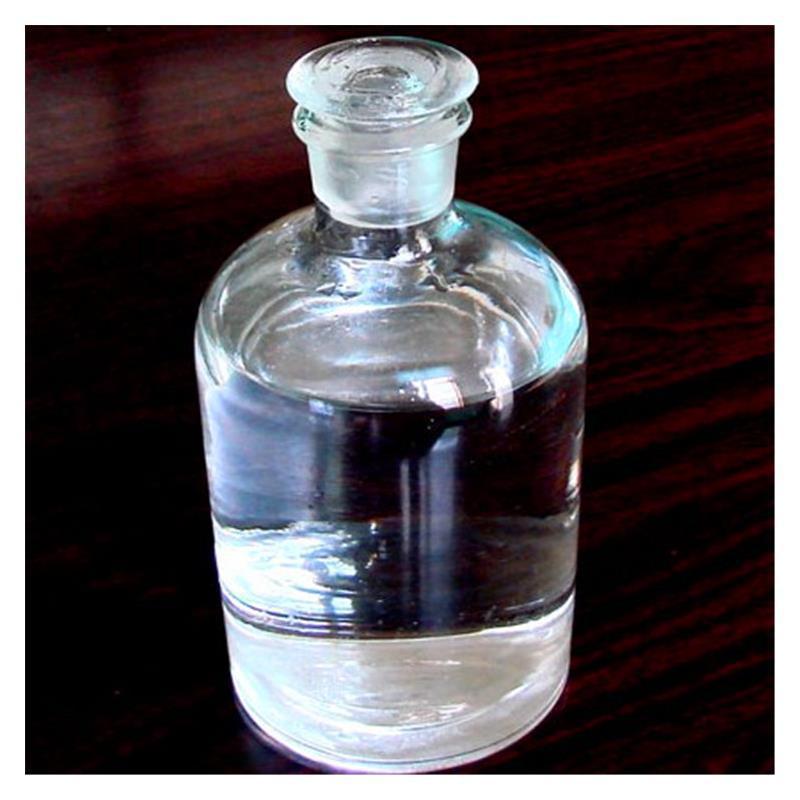[alias] orthophosphoric acid
[Molecular formula] H3PO4
[Properties] Pure phosphoric acid is a colorless orthorhombic crystal into a viscous liquid. The density is 1.834g/cm3, and the melting point is 42.35°C. When it reaches the boiling point of 213°C (losing ½ H2O), pyrophosphoric acid is generated; when heated to 300°C, it becomes metaphosphoric acid. Deliquescent, soluble in water, soluble in ethanol. Its acidity is between strong acid and weak acid, weaker than strong acids such as sulfuric acid, hydrochloric acid and nitric acid, and stronger than acetic acid, boric acid, etc. The structures of acid and hydrate are PO4 tetrahedrons linked by hydrogen bonds composed of. These hydrogen bonds are maintained in concentrated solutions and thus behave viscous. Commercially available phosphoric acid is a viscous liquid containing 83%-98% H3PO4. Phosphate ions in a dilute solution (54% H3PO4) form hydrogen bonds with water. Phosphoric acid has no oxidizing ability. But its sour nature. It can react with alkali, basic oxides and inorganic salts. Concentrated phosphoric acid irritates the skin and mucous membranes. Hot concentrated phosphoric acid can corrode porcelain and can be stored in stainless steel containers.

[Application] Phosphoric acid is an important chemical intermediate product, which can be made into many important products. In the fertilizer industry, it is used to make ammonium phosphate, double superphosphate, superphosphoric acid, precipitated phosphate fertilizer, etc. Inorganic chemical industry is used to produce acid manganese phosphate, dipotassium hydrogen phosphate, disodium phosphate, potassium pyrophosphate and various phosphates. Refined phosphoric acid can be used to prepare calcium oxyphosphate for feed. In the pharmaceutical industry, it is used in the production of sodium glycerophosphate, iron phosphate, zinc phosphate and penicillin pH value regulator, in the food industry, it is used in the production of calcium glycerophosphate and acidic flavoring agents. The paint industry is used to produce metal antirust paint and flame retardant paint. The daily chemical industry is used as a detergent builder. Used as a catalyst in the plastics and organic synthesis industries. It is used as a chemical fireproof finishing agent in the printing and dyeing industry. It is used in the light industry, electromechanical and instrument industries to prepare phosphating solution and phosphating the surface of metal parts. In addition, it is also used as a latex coagulant, a safety match impregnating agent, a pH value regulator, an antirust agent for anodized aluminum coating, as well as preparing electroplating solutions and preparing pigments.
[Brief method]
①There are two types of industrial production: wet method and thermal method. The wet method is obtained by decomposing phosphate rock with strong inorganic acids (sulfuric acid, hydrochloric acid, nitric acid). It can be divided into sulfuric acid method, hydrochloric acid method, nitric acid method and ammonium bisulfate method. Commonly used sulfuric acid method. The thermal method uses yellow phosphorus as raw material, which is obtained through oxidation and absorption. The concentration of phosphoric acid produced by the mixed method is lower. Contains a lot of impurities and needs to be purified; phosphoric acid produced by thermal method has high concentration and purity, but consumes a lot of electricity, and the investment and cost are high.
② When preparing a small amount of pure phosphoric acid for laboratory use, industrial phosphoric acid can be used as raw material, heated to about 80°C, and hydrogen sulfide is introduced to saturation to make arsenic and heavy metals Sulfide precipitates are generated, and after the precipitate is removed by filtration, it will be heated and concentrated at a temperature lower than 150°C to drive out hydrogen sulfide and hydrogen chloride. If the obtained phosphoric acid is still slightly yellow, a small amount of potassium permanganate can be used for decolorization.
[Safety and Protection] Phosphoric acid is a Class II inorganic acid corrosive substance, hazard code number: 93002. Packed in polyethylene plastic barrels, net weight of each barrel is 25kg, 30kg, 35kg. Small packages of 0.5kg and 1.5kg can be packed in small-mouth glass bottles, and the package should be marked with “corrosive substances”. Coat wooden box when transporting. High concentration phosphoric acid should be protected against freezing when it is cold to prevent the container from breaking. It cannot be stored and mixed with alkaline materials and other corrosive materials.
Phosphoric acid vapor can irritate the nasal mucosa and corrode the skin. When the skin touches, it should be washed immediately with plenty of water, and the affected area should be smeared with mercury red or gentian violet solution.

 微信扫一扫打赏
微信扫一扫打赏

